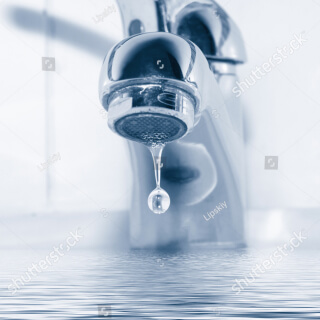Water Testing Made Easy
A new kind of water testing service mixed with an old type of laboratory. Water testing of the future. Faster – Kinder – Smarter – Better

How Simple is Water Testing with Labworx?
Here’s how to use your water testing kit in just a few simple steps:

Order a Water Test Kit Online...
It's Really That Easy!

Collect Water Samples and
Send Them to the Laboratory

Receive Your Detailed
Water Test Report Online!

Test Kits for Well Water
Lorem ipsum dolor sit amet, consectetur adipiscing elit. Viverra blandit amet, et, lectus est ut pulvinar. At urna bibendum egestas duis dui in. Venenatis laoreet curabitur amet orci vulputate magna.
Lorem ipsum dolor sit amet, consectetur adipiscing elit. Viverra blandit amet, et, lectus est ut pulvinar. At urna bibendum egestas duis dui in. Venenatis laoreet curabitur amet orci vulputate magna.
Our Precision Water Tests
We test for anything you could possibly need to know. Trust that you’re making informed decisions based on accurate results.
Advocates For All Regions.
Lorem ipsum dolor sit amet, consectetur adipiscing elit. Viverra blandit amet, et, lectus est ut pulvinar. At urna bibendum egestas duis dui in. Venenatis laoreet curabitur amet orci.
Tellus pretium platea in sit nunc, sem. Aliquet nulla eget a ullamcorper pretium a, placerat commodo. A tincidunt pretium in vestibulum porttitor eu.


City/Muncipal Water
Lorem ipsum dolor sit amet, consectetur adipiscing elit. Viverra blandit amet, et, lectus est ut pulvinar. At urna bibendum egestas duis dui in. Venenatis laoreet curabitur amet orci.
Tellus pretium platea in sit nunc, sem. Aliquet nulla eget a ullamcorper pretium a, placerat commodo. A tincidunt pretium in vestibulum porttitor eu.
Advocates For All Regions.
Lorem ipsum dolor sit amet, consectetur adipiscing elit. Viverra blandit amet, et, lectus est ut pulvinar. At urna bibendum egestas duis dui in. Venenatis laoreet curabitur amet orci.
Tellus pretium platea in sit nunc, sem. Aliquet nulla eget a ullamcorper pretium a, placerat commodo. A tincidunt pretium in vestibulum porttitor eu.

Join Our Community!
Joining Labworx as Community member is a great introduction to the quickly evolving and specialized field of online education for people who would like to learn more or ask questions.
The Labworx membership is totally free and gives you the opportunity to expand your knowledge or contribute to other by networking in the Labworx Community.







Common contaminants in Drinking Water
- Total Coliform
- E. coli
- Arsenic
- Uranium
- Hardness
- Lead
- Alkalinity
- Iron
- Total HPC
- Gross Alpha Activity
- Gross Beta Activity
- Fluoride
- Nitrate
- Copper
- Chromium
- Haloacetic Acids
- Total THMs
- Manganese
Total Coliform
What is it?
Coliforms are a group of common bacteria found in soil, water, and the gut and fecal waste of humans and other warm-blooded animals. Presence of coliform bacteria is used as an indicator to identify when water is contaminated with human or animal waste. The presence of fecal coliforms indicates inadequate water treatment or a problem with the local water distribution system. While most coliform bacteria are harmless, some strains cause illness.E. coli
What is it?
Escherichia coli (E. coli) are the most common type of fecal coliform bacteria. E. coli in water is an indicator of human and animal waste contamination. The presence of E. coli in tap water can indicate inadequate water treatment or a problem with the local water distribution system. Although most strains of E. coli are harmless, some may cause severe illness. If E. coli is detected in tap water, the water should not be used for drinking until properly disinfected.Arsenic
What is it?
Arsenic is a naturally occurring element in the earth’s crust that is widely distributed in the environment and commonly found in groundwater. There are two forms of arsenic commonly found in drinking water that present a health risk: arsenic III and arsenic V. Long-term exposure to elevated arsenic concentrations in drinking water is associated with several adverse health effects including cancer. Effective water treatment is dependent on the amount and form of arsenic present.Uranium
What is it?
Uranium is a weakly radioactive heavy metal found naturally in bedrock and used in nuclear weapons, some ceramics, electron microscopy, photography, and certain fertilizers. Uranium is weakly radioactive because all of its isotopes (Uranium-234, Uranium-235, and Uranium-238) are unstable. Ninety-nine percent of naturally existing uranium is in the isotope form uranium-238. The EPA has established a maximum contaminant level for uranium in drinking water in response to human and animal studies indicating kidney toxicity.Hardness (Total)
What is it?
Total hardness is the sum of all dissolved, multivalent metals in your water. While hardness primarily measures the levels of calcium and magnesium in your water, other ions like aluminum, copper, barium, iron, manganese, strontium, and zinc also contribute to total hardness. Water that has high hardness, described as ‘hard water’, contains high concentrations of naturally occurring dissolved minerals. Total hardness is composed of temporary and permanent hardnesses. Temporary, or carbonate, hardness can be removed from water by boiling and is responsible for the scaling caused by hard water as it reacts with heat. Permanent, or noncarbonate, hardness cannot be removed by boiling water. The hardness of water indicates the degree to which the water reacts with soap; hard water requires more soap to produce a lather and often deposits precipitates, or ‘soap scum’. Hardness is usually reported in units of calcium carbonate equivalency, but grains per gallon is a common alternative unit.Lead
What is it?
Lead is a naturally occuring heavy metal commonly found in tap water. While lead is now a regulated substance, it was widely used in the past in many household products including gasoline, paint, pipes, and plumbing materials. Corrosion of plumbing is the largest source of lead in drinking water. Homes built before 1986 are more likely to have lead plumbing, and an estimated 6 to 10 million lead service lines are still in use by homes throughout the United States. Even low levels of lead exposure can result in significant health impacts, especially developmental effects on children exposed to lead through dust, soil or water.Alkalinity (as CaCO3)
What is it?
Alkalinity is a key measure of a water sample’s general chemistry. Alkalinity measures the capacity of water to neutralize acids. Alkalinity is thus indicative of the stability of a water sample’s pH upon the addition of acid; water with higher alkalinity will maintain a stable pH after the addition of more acid. Water with low alkalinity cannot buffer against such changes and can therefore become acidic and potentially corrosive to plumbing.The vast majority of alkalinity comes from dissolved carbonate and bicarbonate, though other compounds, like phosphates and borates, contribute minorly to alkalinity.Iron
What is it?
Iron is an abundant metal in the environment that exists in three states in water: ferrous (“clear water iron”), ferric (“red water iron”), and organic iron. It is commonly found in tap water and is known for its reddish-yellow discoloration of water and staining. While iron in drinking water is not typically considered harmful to human health, the presence of iron can lead to or indicate other hazards, such as pipe corrosion.Total HPC
What is it?
Total heterotrophic plate count (HPC) is a measure of the colonies of heterotrophic bacteria, or bacteria that require organic carbon for growth, in drinking water. HPC tests have historically been used to indicate water safety, but as more specific tests have been developed, HPC is more commonly used to assess the effectiveness of treatment processes. Bacteria that do not get eliminated during water disinfection can regrow depending on the water’s temperature, flow conditions, nutrient availability, and lack of residual disinfectant. Many HPC bacteria are non-hazardous, so total HPC alone does not directly indicate health risk. Abrupt increases in HPC levels may indicate fecal contamination.Gross Alpha Activity
What is it?
Gross alpha activity measures the total amount of radioactivity in a water sample emitted by decaying alpha-emitting elements, notably radioactive isotopes of uranium, radium, and radon. Alpha emitters are used to treat cancer, as an eliminator of static in paper mills and in other products like smoke detectors. Radioactive atoms release high energy alpha particles that pull electrons off of the atoms in cells. This process is called ionizing radiation, and may lead to harmful changes in cells and tissues. The toxicity of an alpha emitter depends on the amount of energy it releases and how organ systems respond to that energy. Exposure to elevated gross alpha activity is associated with increased cancer risk and genotoxicity, but toxicity to individual systems is dependent on the type of alpha emitter present.Gross Beta Activity
What is it?
Gross beta activity measures the total amount of radioactivity in a water sample emitted by decaying beta-emitting elements, notably radioactive isotopes of potassium, radium, lead, and strontium. Beta emitters are used in cancer treatments and scans as well as emergency phosphorescent lighting. Radioactive atoms release high energy beta particles that pull electrons off of the atoms in cells. This process is called ionizing radiation, and may lead to harmful changes in cells and tissues. The toxicity of a beta emitter depends on the amount of energy it releases and how organ systems respond to that energy. Exposure to elevated gross beta activity is associated with increased cancer risk and genotoxicity, but toxicity to individual systems is dependent on the type of beta emitter present.Fluoride
What is it?
Fluoride is a naturally occuring mineral in the environment and an essential element of tooth enamel. Public health agencies endorse adding fluoride to drinking water–a process called fluoridation–as an effective method of protecting against dental decay, especially in children. High levels of fluoride exposure, common in groundwater around the world, can result in debilitating dental and skeletal fluorosis. Such elevated concentrations are not found in adequately managed water systems.Nitrate (as N)
What is it?
Nitrates are inorganic nonmetal compounds that form naturally when nitrogen combines with oxygen or ozone. Nitrates have many uses from fertilizers to food preservatives. In drinking water, nitrate may be an indicator of nearby agricultural or septic tank contamination. Excessive levels of nitrate in drinking can pose a particular health risk to infants.Copper
What is it?
Copper is a naturally occuring metal that is widely used in plumbing, faucets, and fixtures. Copper enters drinking water primarily via corrosion of copper plumbing. While copper is an essential element for human health, ingesting too much copper can have harmful effects, especially for children.Chromium (Total)
What is it?
Chromium is a naturally occurring element that is widely used in manufacturing processes to make metal alloys such as stainless steel. Chromium is also present in some consumer products. Of the two most common forms of chromium—chromium (III) and (VI)—chromium (VI) is the more toxic form. Hexavalent chromium (VI) is associated with adverse gastrointestinal and hematological effects when ingested. Trivalent chromium (III), on the other hand, is an essential nutrient for human health in small amounts. EPA regulates both hexavalent and trivalent chromium, but standards are set assuming that a measurement of total chromium is 100 percent chromium (VI) to ensure that standards are most health protective.Haloacetic Acids (Total)
What is it?
Haloacetic acids (HAAs) are a group of contaminants that are primarily formed as byproducts when chlorine, used as a disinfectant to kill harmful microorganisms, reacts with organic matter. HAA formation is dependent on a variety of factors in water, including the amount and type of organic matter present, temperature, pH, and chlorine dose. They are also produced for use in chemical synthesis, pesticides, medicines, and preservatives. Nine HAAs have been identified in drinking water, and five are federally regulated, including monochloroacetic acid, dichloroacetic acid, trichloroacetic acid, monobromoacetic acid, and dibromoacetic acid. Elevated levels of HAAs in drinking water are associated with increased cancer risk.Total THMs
What is it?
THMs (trihalomethanes) are a group of contaminants that form in drinking water systems when a disinfectant, typically chlorine, reacts with organic matter. Total THMs measures the total levels of four federally regulated THMs: chloroform, bromoform, bromodichloromethane, and dibromochloromethane. THM formation is dependent on a variety of factors in water, including the amount and type of organic matter, temperature, pH, salinity, and disinfectant used. In addition to their inadvertent creation during water disinfection and from natural sources, THMs are produced for use in the manufacture of refrigerants, other organic chemicals, gauge fluids, pesticides, and propellants. THMs are readily volatile, thus all routes of exposure (ingestion, inhalation and dermal) are relevant if one is exposed via drinking water. Health effects of total THMs in drinking water include liver and kidney toxicity, as well as increased risk of cancer.Manganese
What is it?
Manganese is a transition metal commonly found at low levels in soil, air, and water and in food as an essential nutrient. It has many uses as an industrial alloy (e.g. steel) and an oxidizing agent in rubber, glass, ceramic, and fertilizer/fungicide production. The presence of manganese in water may cause discoloration of water and dark brown or black stains on plumbing fixtures. While manganese is an essential nutrient at low doses, chronic exposure to high concentrations of manganese may have harmful impacts on the nervous system, especially for young children.
Frequently Asked Questions
Suspendisse mauris erat, blandit vitae tellus bibendum, finibus porttitor dolor. Vestibulum ante ipsum primis in faucibus orci luctus et ultrices posuere cubilia curae
Suspendisse mauris erat, blandit vitae tellus bibendum, finibus porttitor dolor. Vestibulum ante ipsum primis in faucibus orci luctus et ultrices posuere cubilia curae
Suspendisse mauris erat, blandit vitae tellus bibendum, finibus porttitor dolor. Vestibulum ante ipsum primis in faucibus orci luctus et ultrices posuere cubilia curae
Suspendisse mauris erat, blandit vitae tellus bibendum, finibus porttitor dolor. Vestibulum ante ipsum primis in faucibus orci luctus et ultrices posuere cubilia curae
Suspendisse mauris erat, blandit vitae tellus bibendum, finibus porttitor dolor. Vestibulum ante ipsum primis in faucibus orci luctus et ultrices posuere cubilia curae
